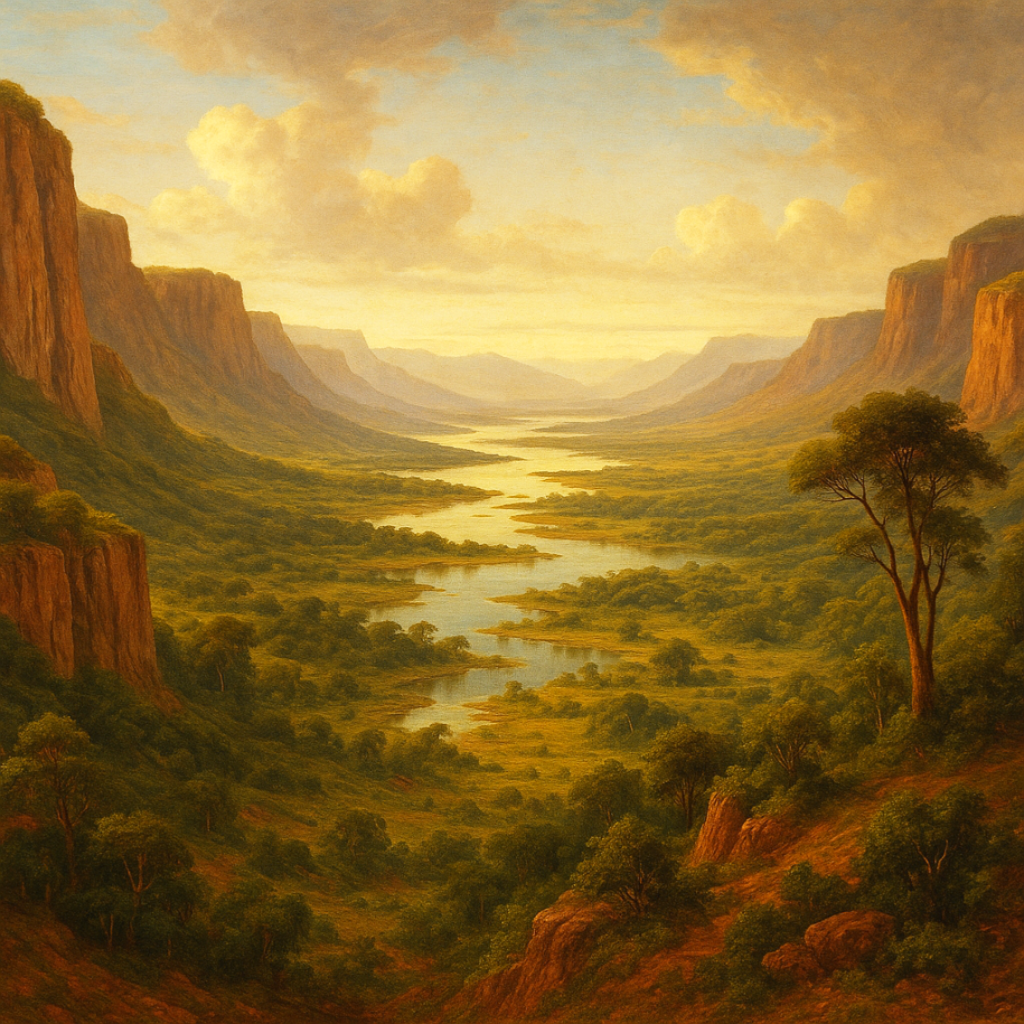Introduction to the Great Rift Valley
The Great Rift Valley, often referred to as one of the most extraordinary geological formations on Earth, is an extensive geological trench that stretches approximately 6,000 kilometers (approximately 3,700 miles) across East Africa from Syria in the North, through Lebanon, Jordan, and into the Ethiopian Highlands at the southern end. As a prime example of contemporary continental rifting, the Great Rift Valley is a significant region where geological processes have led to the splitting apart of continents, forming a diverse array of ecosystems and cultural histories.
This unique feature of the Earth’s crust is not only important for its geological implications, but it is also home to a rich array of wildlife and has deep cultural significance for the communities that populate its surroundings. As we delve deeper into the Great Rift Valley, we will explore its geological formation, ecological diversity, and cultural context, offering comprehensive insights into this remarkable region.
Geological Processes and Formation
Understanding Continental Rifting
The geological significance of the Great Rift Valley stems from the tectonic forces that are currently shaping the Earth’s lithosphere. It represents an active continental rift zone formed due to the divergent boundaries of tectonic plates—specifically, the African Plate is splitting into two smaller plates: the Somali Plate and the Nubian Plate. This rifting process initiates volcanic activity and seismic events, with new crust being formed as magma wells up from the mantle.
Historical Formation
The formation process of the Great Rift Valley began around 35 million years ago during the late Oligocene to early Miocene epochs, culminating in extensive volcanic activity, faulting, and sedimentation that created the valley’s characteristic landscape of highlands and deep basins. The tectonic plates are gradually still drifting apart, with current estimates suggesting a rate of approximately 6-7 mm per year. In addition to its geological features, the valley hosts various geological formations, including:
* Dramatic Mountain Ranges: The East African Rift Mountains, characterized by their rugged terrain, arise on both sides of the valley. Mountains such as Mount Kilimanjaro and Mount Kenya are volcanic in origin, with their last eruptions occurring thousands of years ago.
* Rift Lakes: The valley is home to several lakes, such as Lake Victoria, Lake Tanganyika, and Lake Malawi, which were formed by repetitive faulting and sinking of the earth’s crust. These lakes play crucial roles in the region’s hydrology and biodiversity.
Comparative Analysis to Other Geological Formations
When comparing the Great Rift Valley to other geographical formations, such as the San Andreas Fault or the Mid-Atlantic Ridge, one can observe that the Great Rift Valley is unique due to its length and the rich biodiversity that stems from its varied climates and elevations. The San Andreas Fault represents a transform boundary, whereas the Mid-Atlantic Ridge is primarily an oceanic rift zone. The Great Rift Valley’s geological processes lead not only to rifting but also showcase diverse landscapes that facilitate ecological variety and rich human history.
Ecological and Biodiversity Overview
Unique Ecosystems of the Great Rift Valley
The ecological significance of the Great Rift Valley cannot be overstated. Due to the unique geological formation and varying altitudes, the Great Rift Valley features a wide range of ecosystems, from deserts to alpine environments, and is home to over 30 national parks and game reserves. Some notable examples include:
* Lake Nakuru National Park: Famous for its large populations of lesser flamingos, this park is a UNESCO World Heritage site. The lake is highly alkaline, providing crucial habitat for various bird species.
* Serengeti National Park: Located in Tanzania, it is world-renowned for its wildlife population, including the Big Five: lions, elephants, buffalo, leopards, and rhinoceroses.
* Mount Kilimanjaro: Apart from being Africa’s highest peak, it presents diverse vegetation zones ranging from rainforest to alpine desert.
Ecological Diversity and Conservation Challenges
Biodiversity within the Great Rift Valley ensures a wide array of wildlife habitat, fostering rare and endemic species. However, this ecological wealth is threatened by anthropogenic influences such as deforestation, agriculture, and human-wildlife conflict, ultimately challenging conservation efforts in this region. In response to these threats, numerous conservation initiatives aim to protect and sustain the unique biodiversity within this crucial geological structure. These include:
* Community-Based Conservation Programs: Engaging local communities in preservation efforts has been effective in promoting sustainable practices that benefit both wildlife and human populations.
* Protected Areas: The establishment of national parks and reserves aims to mitigate habitat fragmentation while offering ecological services and tourism revenues to the local people.
Cultural and Historical Context
Indigenous Communities and Cultural Heritage
The Great Rift Valley has long been inhabited by various indigenous communities such as the Maasai, Kikuyu, and others. These communities have deep-rooted cultural ties to the land and have adapted their lifestyles to the rich resources that the valley offers. The Maasai, renowned for their unique customs and traditions, have traditionally grazed cattle across the vast plains and mountainous regions of the valley. Cultural practices, languages, and belief systems have thrived in connection with the ecological diversity.
Historical Significance
The valley also has historical importance as a cradle of human evolution. The discovery of ancient hominid fossils in the region, particularly in areas such as the Olduvai Gorge, has provided critical insights into the evolutionary lineage of Homo sapiens. The discoveries made by renowned archaeologists such as Louis and Mary Leakey have highlighted the valley as a focal point for anthropology and archaeology, further enriching its cultural significance.
Modern-Day Significance
Today, the Great Rift Valley serves not only as an ecological and geological marvel but also as a vital resource region for communities across East Africa. Its lakes and lands provide essential resources for fishing, agriculture, and tourism. The integration of sustainable practices, education, and community involvement is crucial for preserving both the cultural heritage and the natural environment for future generations.
Conclusion and Future Outlook
The Great Rift Valley stands as a testament to the dynamic processes that shape our planet. As a region where the continents split apart, it holds immense geological significance as well as ecological diversity and rich cultural history.
Moving forward, the future of the Great Rift Valley depends on balancing conservation with the needs of its local populations. Enhanced educational programs centered around geology, ecology, and cultural heritage can foster appreciation and stewardship of this beautiful region. As our understanding of geology and ecology continues to evolve, so too must our efforts to protect and sustain the unique aspects of the Great Rift Valley for generations to come.
FAQ Section
What is the Great Rift Valley?
The Great Rift Valley is an extensive geological trench formed by the tectonic activity where the African Plate is splitting into two smaller plates. It spans approximately 6,000 kilometers from Syria to Mozambique.
How was the Great Rift Valley formed?
Its formation began around 35 million years ago due to tectonic rifting, volcanic activity, and the movement of crustal plates, leading to the current landscape of lakes, mountains, and valleys.
What wildlife can be found in the Great Rift Valley?
The Great Rift Valley is home to diverse species of wildlife, including elephants, rhinoceroses, lions, as well as numerous endemic bird species like the flamingos of Lake Nakuru.
What cultural significance does the Great Rift Valley have?
The valley is historically significant as the cradle of humanity, with important archaeological sites like Olduvai Gorge. It also hosts rich cultural traditions from communities such as the Maasai.
What conservation efforts are in place for the Great Rift Valley?
Numerous community-based conservation programs and protected areas aim to preserve the biodiversity and cultural heritage of the Great Rift Valley while promoting sustainable practices among local populations.


